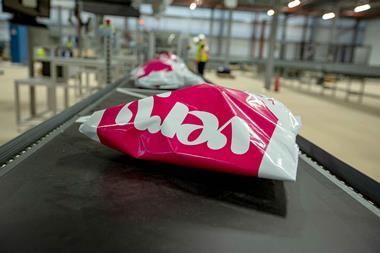If the global pandemic has taught us anything it is that agility is key and those that can be flexible will come out on top in the survival of the fittest.
In a matter of weeks, coronavirus turned the retail industry on its head.
With stores forced to shutter, retailers had to think smartly and act quickly if they wanted to keep their head above water.
Those that had invested in robust technology were able to act quickly particularly when it came to ecommerce. But as we start moving ahead into a very uncertain future for the sector is it clear that agility will remain integral to success.
As we start moving ahead into a very uncertain future for the sector is it clear that agility will remain integral to success
Retail today is a complicated creature. While customers now benefit from improved convenience and choice, with a plethora of sales channels to choose from, businesses have to juggle complicated stock requirements and planning.
Why is real-time stock important?
Stock being in the right place at the right time is integral. If stock isn’t where it is needed sales can be lost, costs amplified and customers’ orders delayed.
There are many retailers that do not have effective IT systems in place to help with stock management.
Many businesses are also missing out on the opportunities of BOPIS (buy online pick up in-store) and BORIS (buy online return in-store). This is often as a result of systems developed over many years linking with other systems – resulting in a problem that can be difficult to solve.
In terms of technology, most retailers are turning towards a single-system approach or at least rationalising systems.
To capitalise on new opportunities, retailers need systems that are future proof and must make sure they are up to speed on the latest developments as the world of retail is constantly evolving.
Forecasting is bordering on impossible given the unpredictability of life at the moment, making having a single view of stock and control of data more crucial than ever.
With this in mind, here are five things to think about when looking to improve stock management.
1. Optimise stock across stores
Customer expectations are constantly changing and, along with convenience and choice, shoppers expect exceptional delivery service and a range of options.
The more advanced retailers can not only ship stock from the distribution centre but also from other stores to fulfil multichannel orders.
App-based stock-taking is also making it easier for retailers to get a robust view on stock.
2. Click-and-collect messaging
Click and collect provides the opportunity to deliver excellent customer experience both online and face to face.
It is worth spending time experimenting with messages to customers about the availability of their order.
With customers coming into store to collect, retailers get another chance to upsell on slow-moving stock.
3. Ecommerce vs store stock
Balancing stock allocations between ecommerce, stores and marketplaces is a constant challenge for retailers.
Invest in intelligent systems that do not need to ring-fence stock. Joining up solutions and applying predictive analytics also helps. deliver cost savings.
4. Returns
There is a high cost associated with returns, especially in fashion. Sustainability also makes this a hot topic.
There are many tools to leverage in this area from Fit Analytics for prevention to Rebound for the cure. Warehouse management system processes can be optimised by picking from returns locations.
5. Understand customer needs
Technology is changing and customers’ buying habits are transforming constantly. Having a single view of the customer will help to understand the level of service and fulfilment they need.
In turn, retailers can mould their brand experience to cater directly to their shoppers’ behaviour.




























